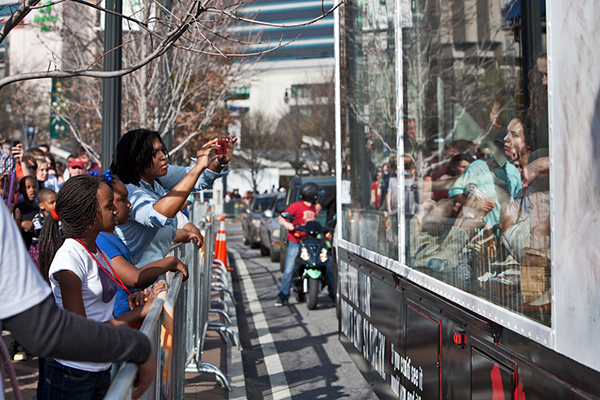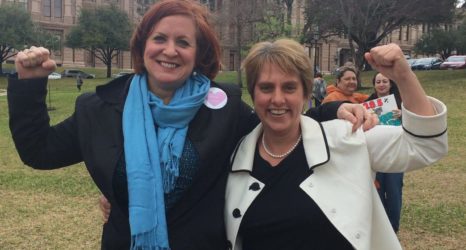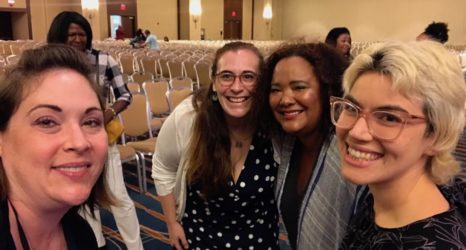
The theme of the 2019 National Sexual Assault Conference—Beyond the Breakthrough—sought to inspire the collective movement to end sexual violence and build on the momentum of the #MeToo movement. Ms. was the media sponsor for the conference—and expanded the discussions happening on-site with this dedicated series. Click here to read more posts. You can also watch interviews and conference sessions from #NSAC2019 on the Ms. Facebook!
In over 30 states, a young person under age 18 cannot be arrested for prostitution—replacing a punitive juvenile justice response with one informed by prevention, supportive victim services and child welfare. Many youth benefit from assistance that addresses their trauma by building upon their strengths and resiliency.
But then they turn 18. They might be moving on to thrive in their adulthood as survivors. Or, maybe not.

In some states, Safe Harbor services go beyond 18. In Minnesota, for example, eligibility extends through age 24. In others, like North Dakota, there is no age limit for shelter and advocacy. And, depending on the jurisdiction, many law enforcement officers have declined arrest of individuals age 18 and over who engage in prostitution, focusing their efforts instead on charging buyers and traffickers.
But there are still limits.
Many adults are arrested for engaging prostitution, and they remain under threat of arrest. Some receive a second chance before entering the criminal justice system, while others serve time and suffer the collateral consequences of arrest and conviction like homelessness or losing custody of children. In a few states the law allows a defense if trafficking and exploitation is involved. And yet, even when this is a successful approach in court, there are few dedicated services available to adults “in the life” to help them heal, secure housing, return to school, learn job skills, and, in some cases, regain custody of their children. Could a Safe Harbor for All law eliminating age requirements improve their chances for success?
In 2017, the Minnesota state legislature told the Minnesota Department of Health (MDH) to answer that question. MDH tasked the University of Minnesota Urban Research and Outreach-Engagement Center, the Advocates for Human Rights, and Rainbow Research to conduct qualitative research about what Safe Harbor for All might look like in Minnesota.
The researchers drew upon the expertise of nearly 300 individuals representing a variety of disciplines—advocacy, service provision, law enforcement, prosecution—as well as self-identified lived experience in prostitution, sex work, trafficking and exploitation. In January 2019, after consulting with the Minnesota Department of Human Services and Office of Justice Programs in the Minnesota Department of Public Safety, MDH submitted a strategic plan plus the full research report containing 19 recommendations to the legislature.
The researchers identified several ways the state could improve outcomes for all people with lived experience—including victims and survivors. The report recommended changes in the law to address collateral consequences of criminal records, improved housing, more supports for families and stronger accountability for systems disproportionately impacting communities of color such as law enforcement and child welfare. In addition, recognizing the 11 tribal nations located in Minnesota, the report called out the legacy of colonization and continued marginalization as factors influencing higher levels of trafficking and exploitation of American Indians, including the epidemic of missing and murdered indigenous women.
The report also addressed different approaches to prostitution laws by weighing the systemic and cultural impacts of full decriminalization, partial decriminalization, legalization and full criminalization. The researchers found that most participants wanted the state to explore partial decriminalization, meaning only the buyer is criminally charged in a transaction, not the individual who is selling. This approach is commonly known as the “Nordic model” based on its implementation in countries like Sweden. However, the Minnesota participants rejected this nickname because of its implied bias toward white people. The phrase also holds little meaning in the United States, where social supports are not as robust as in Scandinavia.
Minnesota is poised to explore Safe Harbor for All and its implications for significant policy change as well as cultural shift. But this is not a quick fix. If Safe Harbor for All is pursued, it must be an intentional process. Supports must be in place so adults can choose among a variety of meaningful services. In some instances, these services might be built into existing Safe Harbor programs for youth—but more likely than not, adults will need more options, requiring overlap with several systems, especially employment.
Most significantly, Safe Harbor for All could further erase the perception that interventions before age 18, or even up through 24, are sufficient to address the needs of all survivors of trafficking and exploitation. There are no magic numbers. Many people move in and out of the life of trafficking and exploitation over the course of several years. Experiences, perceptions and self-identification are fluid and may change over time. Even when a survivor is able to disengage, the effects of the trauma are life-long.
Our systems can and should be better equipped to support health, safety, dignity and justice for trafficking survivors and all people with lived experience.
Lauren Martin, PhD and Beatriz Menanteau, JD, contributed reporting.





